September 24, 2024
Understanding the Colours of Navratri: A Spiritual Guide

Club Mahindra


View all
140+
Resorts
September 24, 2024
Club Mahindra
Navratri is not merely a festival; it is a nine-night spiritual odyssey that celebrates the divine feminine energy, Shakti, in her many powerful and nurturing forms. Each of these nine days is dedicated to a distinct manifestation of Goddess Durga and is associated with a specific colour. These colours are more than symbolic garments; they reflect energies, intentions, and inner transformation. For many devotees, wearing the designated colour each day is a way of tuning into the cosmic rhythm of Navratri, aligning one’s spirit with the goddess of the day.
In this blog, we delve into the profound significance behind each of these nine colours, exploring what they represent spiritually and how they influence the celebratory tone of Navratri in homes and hearts across India and beyond.
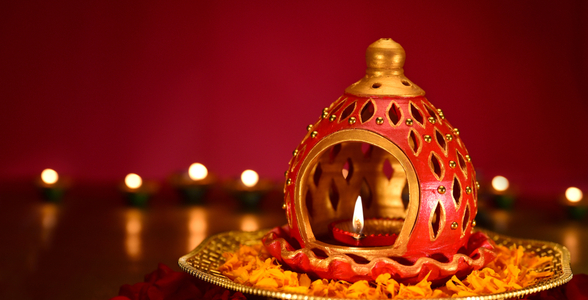
In 2025, Sharad Navratri will begin on Monday, September 22, and conclude on Wednesday, October 1. The festivities will culminate with Vijayadashami (Dussehra) celebrations on October 2, marking the triumph of good over evil.
Navratri literally means "nine nights," during which the Goddess Durga is worshipped in nine distinct forms. These forms are not only divine figures but also metaphors for inner strength, clarity, wisdom, power, and compassion. Over centuries, these manifestations have been assigned colours that best reflect their essence.

The 9 colours of Navratri are traditionally associated with each day of the festival, symbolising different aspects of Goddess Durga. The colours and their meanings may vary slightly, but they generally follow this pattern:
If you are fasting for Navratri in 2025 but are not sure what to eat, read about Navratri food and know the recipes.
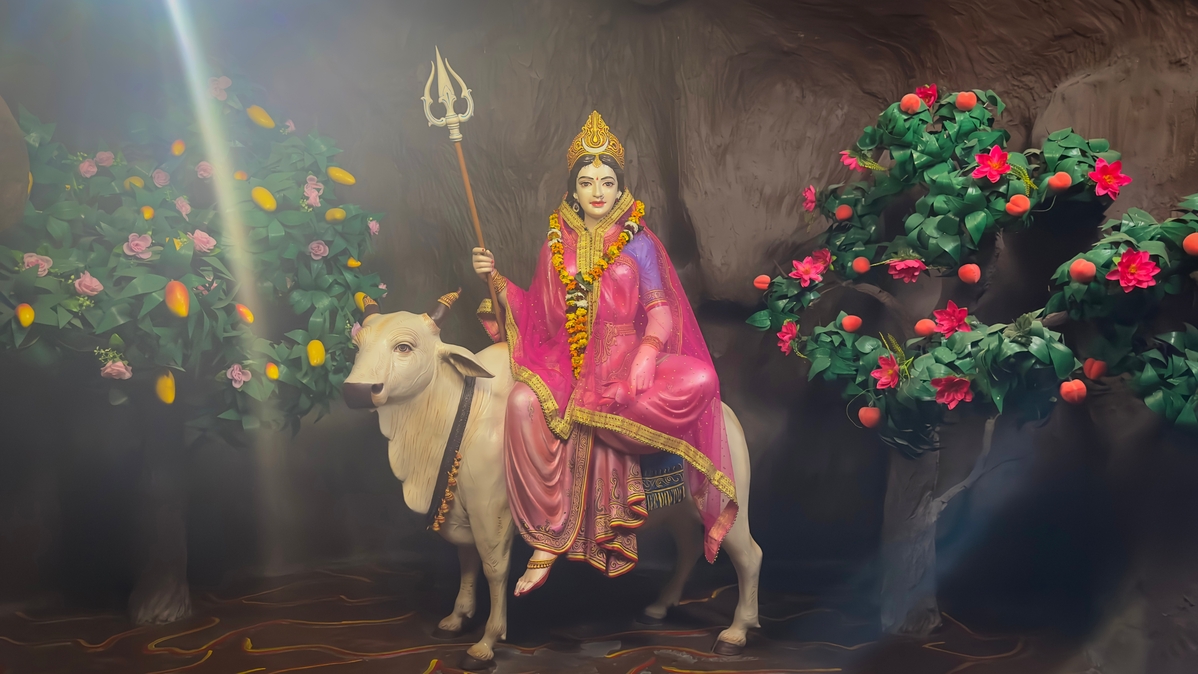
Meaning of White:
White stands for purity, peace, and truth. It symbolises simplicity and spiritual clarity. This colour calms the mind and nurtures inner harmony. It reflects innocence, sincerity, and the pursuit of higher wisdom. Wearing white during Navratri creates an aura of serenity and devotion.
Spiritual Significance:
Wearing white helps us connect with inner calm. It clears mental clutter, promotes forgiveness, and allows us to experience serenity. Spiritually, it represents the cleansing of the soul and the idea that true strength often lies in simplicity.

Meaning of Red:
Red is the colour of power, love, and action. It embodies passion, courage, and strength. This vibrant hue awakens determination and the will to overcome obstacles. It is often linked with devotion and the divine feminine energy, Shakti. Wearing red during Navratri invokes confidence, vitality, and a fearless spirit.
Spiritual Significance:
Red connects with the warrior energy of Goddess Durga. It reminds us of the fire within, the power to fight struggles, face fears, and take bold actions. Spiritually, red also signifies vitality and life-force energy.
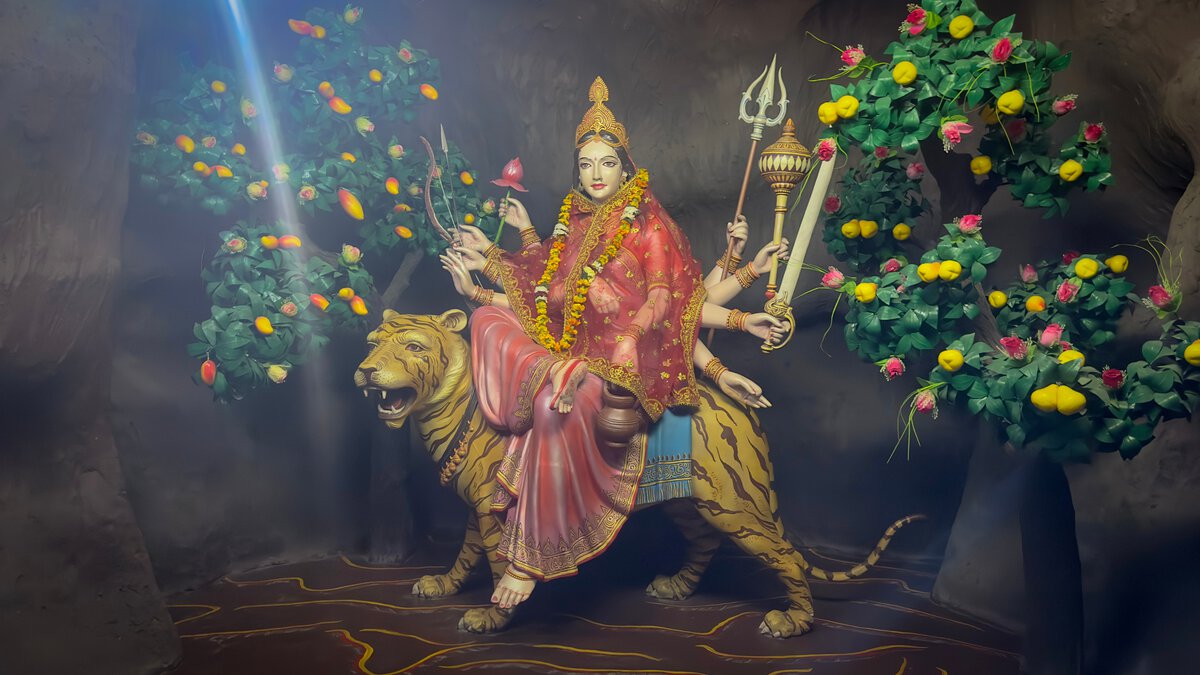
Meaning of Royal Blue:
Royal blue is deep and majestic. It represents wisdom, stability, and divine grace. This colour inspires a sense of calmness and trust, guiding the mind towards clarity. It is associated with devotion and the infinite depth of the universe. Wearing royal blue during Navratri invokes serenity, strength, and spiritual connection.
Spiritual Significance:
This colour symbolises trust, loyalty, and responsibility. Spiritually, it helps us connect to deeper truths and inspires devotion. It is also a reminder of the vast sky and ocean, symbols of infinite possibilities.

Meaning of Yellow:
Yellow is the colour of the sun, light, and knowledge. It radiates warmth, optimism, and hope. Beginning Navratri with yellow signifies a fresh start filled with positivity. It also fosters clarity of mind and inspires enthusiasm for embracing new opportunities.
Spiritual Significance:
Yellow represents clarity of thought, wisdom, and cheerfulness. Just as the rising sun removes darkness, this colour inspires us to remove negativity and step into brightness. It also symbolises learning and curiosity, reminding us that spiritual growth starts with awareness.
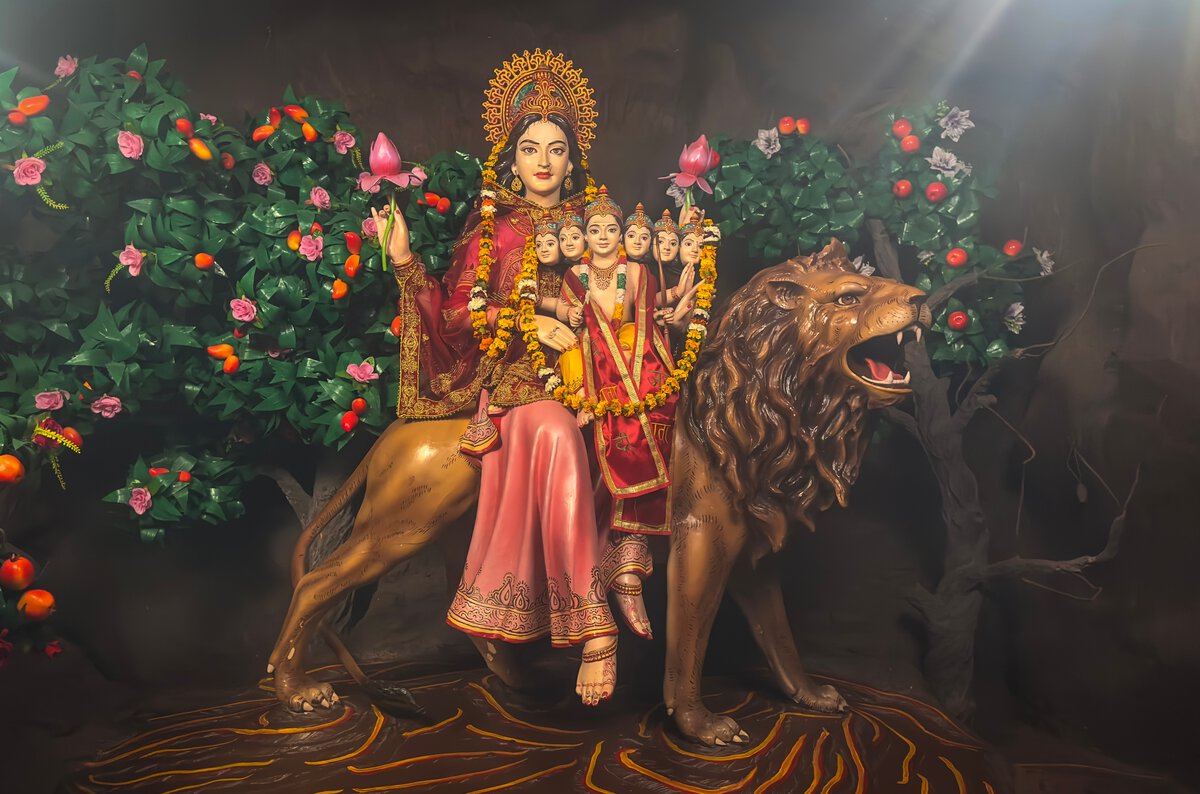
Meaning of Green:
Green is the colour of nature, fertility, and harmony. It represents renewal, growth, and balance. Wearing green during Navratri channels the energy of creation and nurtures inner peace. It also reminds us to stay grounded while moving forward with patience and hope.
Spiritual Significance:
Green connects us with the natural world and the energy of creation. It symbolises progress, not just physical growth but also spiritual and emotional development. Wearing green encourages us to stay grounded, patient, and connected with life’s natural rhythms.

Meaning of Grey:
Grey is often seen as dull, but in spirituality, it represents neutrality and balance. It is the middle ground between extremes, light and dark, joy and sorrow. It teaches us the value of calm detachment and inner stability amidst life’s fluctuations.
Spiritual Significance:
Grey symbolises the ability to stay calm and composed in all situations. It teaches us to detach from unnecessary chaos and find inner peace. Wearing grey helps us remain steady and balanced, even when life is unpredictable.
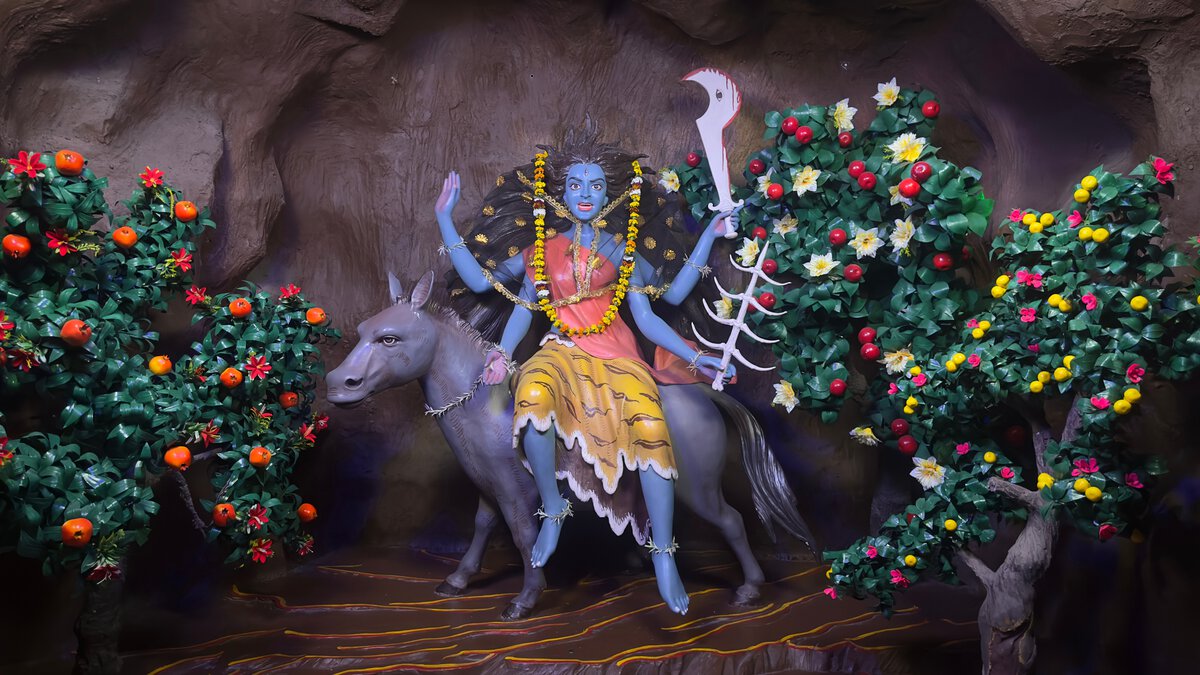
Meaning of Orange:
Orange is bold, bright, and powerful. It symbolises courage, enthusiasm, and vitality. This colour ignites passion and inspires confidence to take on challenges fearlessly. It is often associated with spiritual awakening, creativity, and transformation. Wearing orange during Navratri invokes positivity, energy, and a zest for life.
Spiritual Significance:
This is the colour of fire and transformation. It represents the spark of confidence and action. Orange inspires us to break free from fear, chase our dreams, and live life with passion. Spiritually, it is linked to creativity and self-expression.
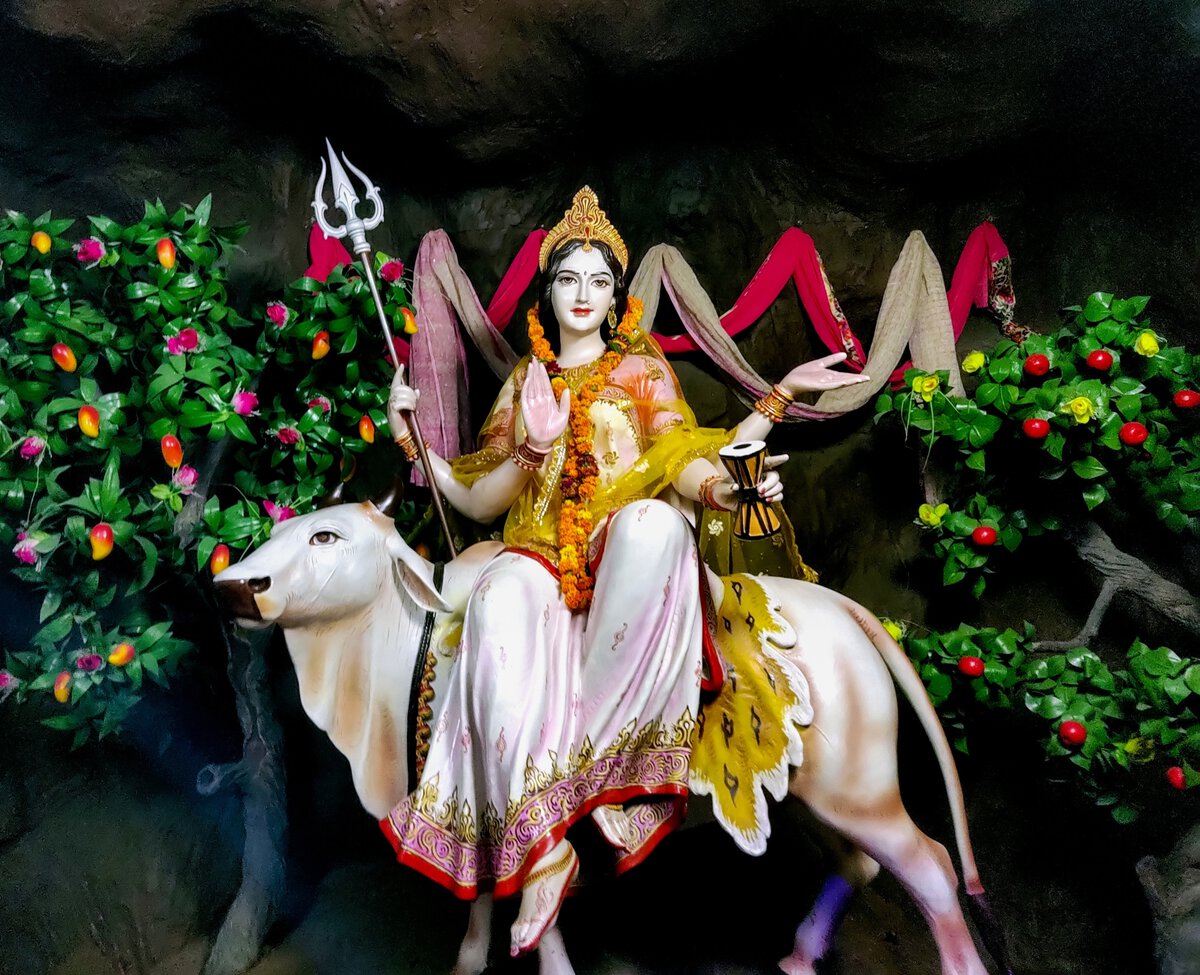
Meaning of Peacock Green:
Peacock green is vibrant and refreshing, blending the calmness of blue with the energy of green. It represents renewal, balance, and prosperity. This colour inspires harmony with nature and awakens creativity. Wearing peacock green during Navratri brings a sense of growth, positivity, and emotional balance.
Spiritual Significance:
This colour is associated with healing, compassion, and balance. Spiritually, it brings peace to the heart and strengthens emotional well-being. Like the peacock itself, it reflects beauty, pride, and grace while reminding us of the divine connection in all living things.
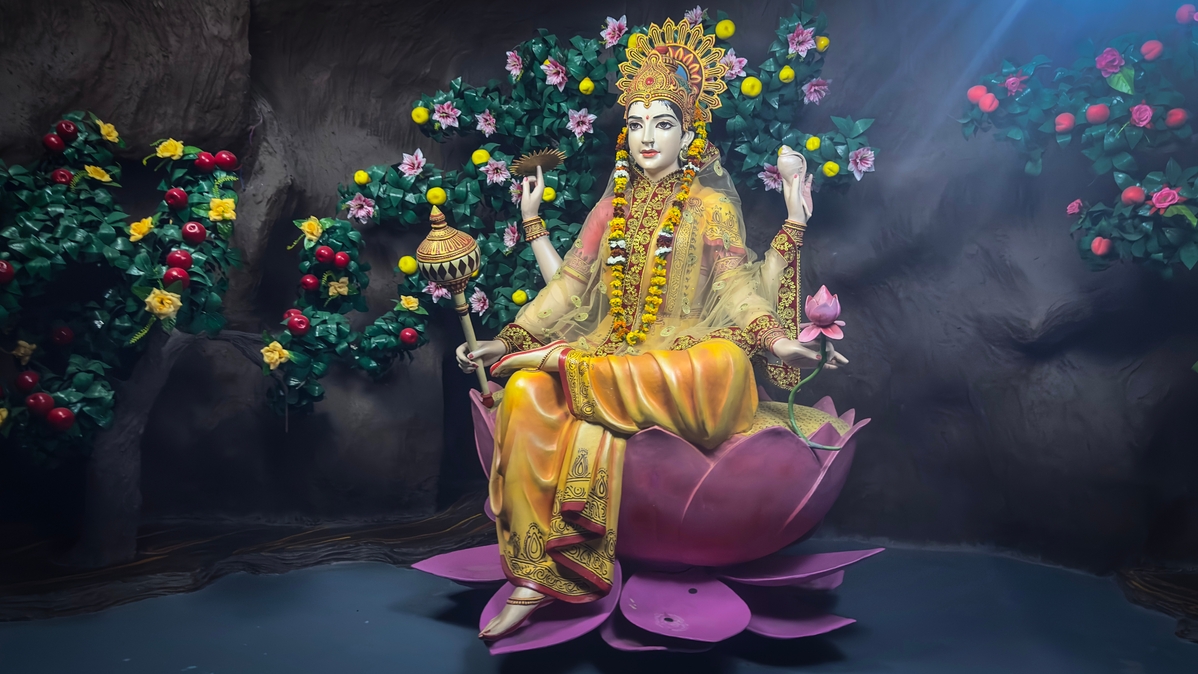
Meaning of Pink:
Pink represents love, kindness, and compassion. It is gentle yet powerful in spreading harmony. Wearing pink during Navratri nurtures warmth in relationships and opens the heart to selfless care. It also symbolises universal love, encouraging unity and emotional healing.
Spiritual Significance:
This colour reflects the nurturing aspect of the divine feminine. It encourages forgiveness, self-love, and empathy. Pink heals emotional wounds and helps us open our hearts to deeper connections.
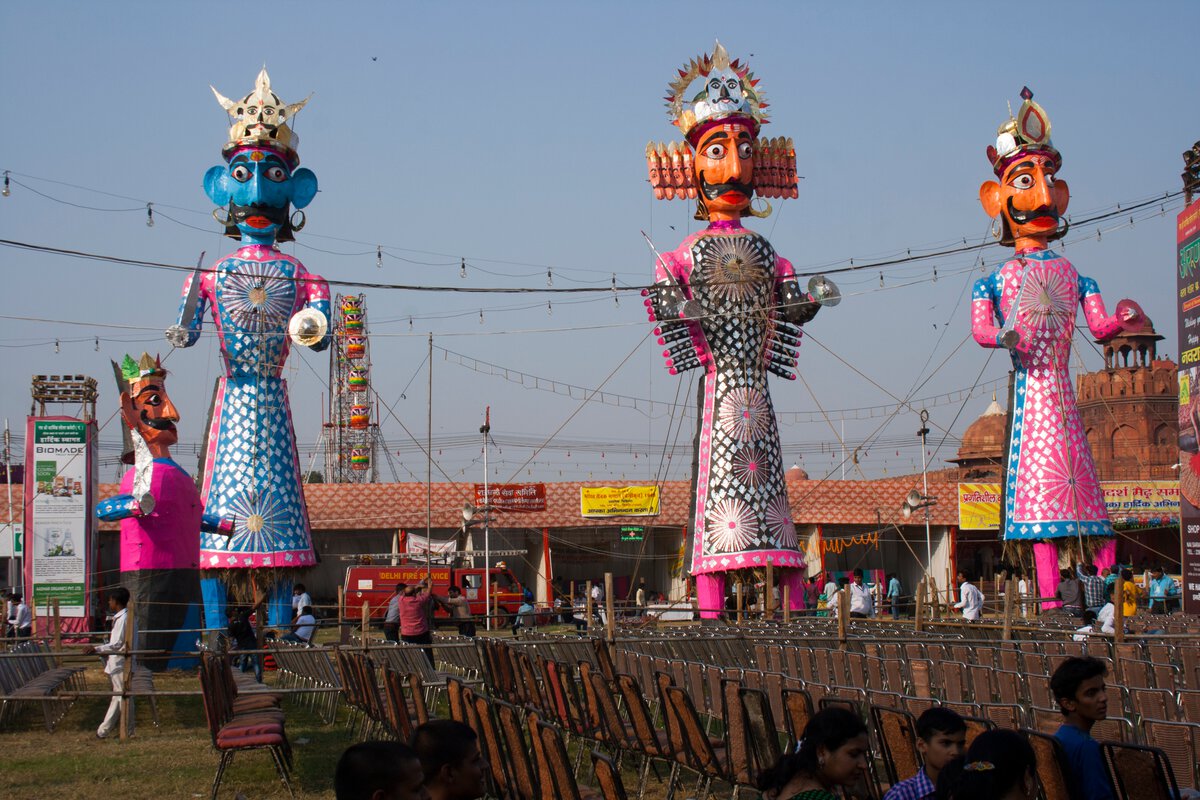
Vijayadashami, also known as Dussehra, marks the grand conclusion of the Navratri celebrations and will be observed on October 2, 2025. This day is considered highly auspicious for initiating new endeavours, be it starting a business, undertaking important projects, or beginning personal milestones.
In many regions, especially in the South, the occasion is observed through the Vidyarambham ritual, where young children are ceremoniously introduced to learning, symbolising the beginning of their educational journey with divine blessings.
In West Bengal, the day resonates with cultural significance through the tradition of Sindoor Khela. On this occasion, married women dressed in festive sarees joyfully apply vermilion (sindoor) to one another, honouring the power, protection, and blessings of the goddess before bidding her farewell.
Explore what the Navratri celebration across India looks like.
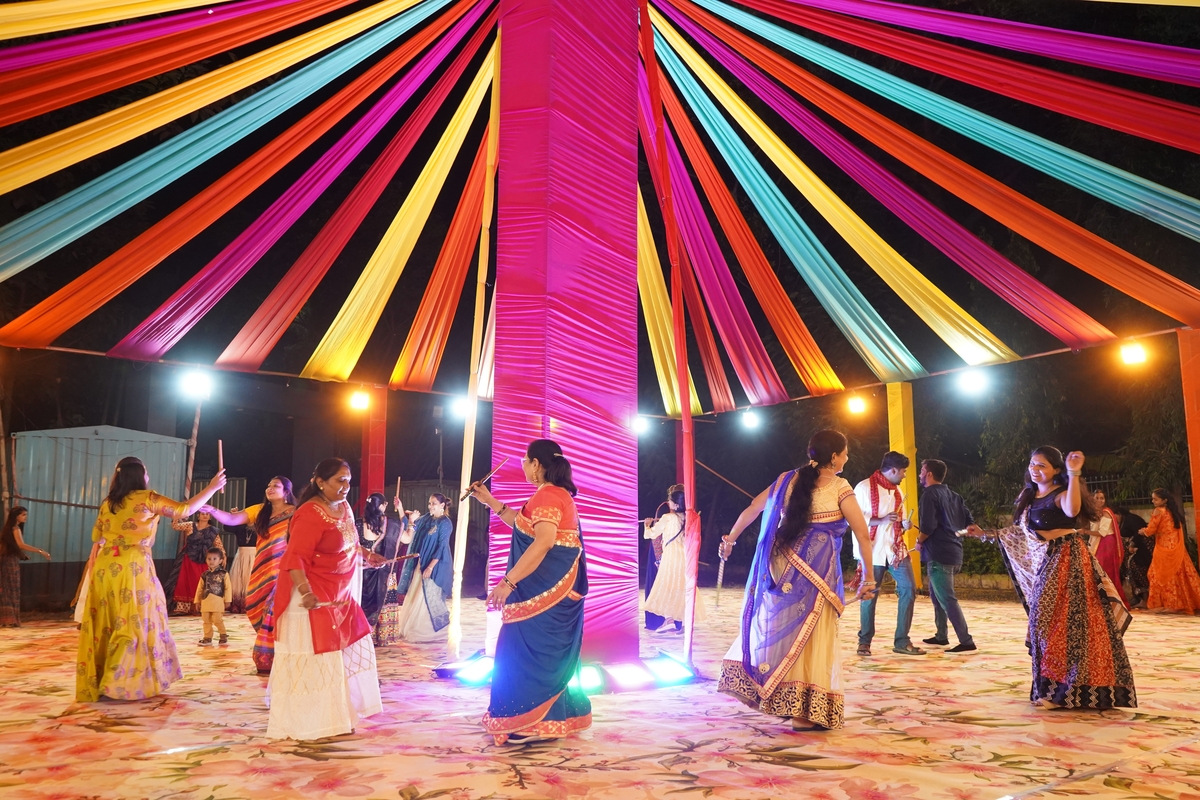
Navratri is not just a once-a-year event; it's celebrated in four distinct forms across the Hindu calendar, each carrying its own spiritual essence and cultural flavour. These variations reflect different aspects of the goddess and are observed at different times of the year with unique regional customs.
The most widely celebrated and vibrant form, Sharad Navratri, takes place during the lunar month of Ashwin (September–October). It honours the powerful battle between Goddess Durga and the demon Mahishasura, ultimately symbolising the victory of good over evil. This is the Navratri most associated with Garba, Dandiya, Durga Puja, and grand temple rituals across India.
Falling in the month of Chaitra (March–April), Chaitra Navratri aligns with the beginning of the Hindu New Year in many regions. Particularly significant in North India, including states like Uttar Pradesh and Maharashtra, this Navratri is marked by deep devotion and the recitation of sacred texts such as the Ramayana.
Celebrated in the month of Magha (January–February), Magha Navratri is less known on a national scale but holds great importance among certain communities. The final three days are especially sacred, often coinciding with Vasant Panchami, and are dedicated to Goddess Saraswati, the embodiment of knowledge and learning.
Held during the month of Ashadha (June–July), this lesser-known form is often referred to as Gupta Navratri. Unlike the festive nature of Sharad Navratri, Ashadha Navratri is observed more privately and is focused on intense spiritual discipline, meditation, and esoteric rituals, especially by sages and spiritual seekers.
Each of these Navratris offers a unique opportunity to connect with the divine feminine, from joyous public celebrations to introspective personal practices. Among them, Sharad Navratri remains the most celebrated, drawing millions into its powerful orbit of devotion, dance, and divine energy.
The nine colours of Navratri are more than a tradition; they're a living tapestry of emotion, energy, and elevation. Each shade carries a frequency, a whisper from the divine, guiding us inward and upward, from grounded being to cosmic consciousness. In a world that rarely pauses, Navratri invites us to slow down and reconnect with our roots, our rhythms, and our inner goddess. These colours aren't just for celebration; they are soul markers, each one holding a lesson, a vibration, a light.
Whether you're donning the colour of the day, lighting a diya, or simply holding space for intention, you're participating in something sacred. You're honouring resilience, grace, and the ever-turning wheel of transformation.
So, this Navratri, let your choices be mindful. Let your colours speak not just to your wardrobe, but to your spirit. Let each hue awaken a deeper truth within you.
Each colour is linked to a form of Goddess Durga and reflects her qualities, such as wisdom, power, purity, or compassion. Wearing the colour of the day helps devotees align with these divine energies and set a spiritual intention.
Yes, absolutely. The colours are symbolic and meant to inspire positivity and devotion. Even if someone is not fasting, wearing the day’s colour allows them to connect with the spirit of Navratri and be part of the celebrations.
A Club Mahindra membership opens the door to stress-free, memorable holidays year after year. Members get access to 140+ Club Mahindra resorts across India and abroad, offering everything from tranquil beaches and scenic hill stations to vibrant cities and cultural hotspots. The membership is designed with flexibility, allowing families to holiday during their preferred dates and seasons. Spacious, well-maintained accommodations ensure comfort and relaxation, while exclusive privileges like discounts on dining, spa treatments, and unique in-resort experiences add extra value. With glowing feedback from countless happy members, Club Mahindra membership is more than a travel plan; it’s a gateway to endless family adventures and cherished memories.
Here are some of the beautiful Club Mahindra resorts in Gujarat:
Club Mahindra Kensville Golf Resort, Ahmedabad – A sprawling golf-themed retreat surrounded by greenery and an 18-hole championship course
Club Mahindra Gir Resort, Junagadh – A jungle getaway near Gir Wildlife Sanctuary, perfect for wildlife safaris and rustic charm
Club Mahindra Dwarka Resort, Dwarka – A serene coastal resort offering peaceful stays with a spiritual ambience
Club Mahindra Netrang Resort, Bharuch – A tranquil escape amidst forests and waterfalls, ideal for relaxation and nature lovers
These resorts in Gujarat offer the perfect blend of comfort, culture, and experiences for families. A stay at any of them promises unforgettable holidays filled with relaxation and discovery.
Mahindra Holidays & Resorts India Ltd. (MHRIL), a part of Leisure and Hospitality sector of the Mahindra Group, offers quality family holidays primarily through vacation ownership memberships and brings to the industry values such as reliability, trust and customer satisfaction. Started in 1996, the company's flagship brand ‘Club Mahindra’, today has over 300,000 members , who can holiday at 140+ resorts in India and abroad.
We use cookies to personalise content and to provide you with an improved user experience.By Continuing to browse this site you consent to the use of cookies.Please visit our cookie policy for further details.

Welcome to ClubMahindra.com In order to provide a personalised experience for you, we use cookies to enable some website functionality. Cookies help us see which articles most interest you; allow you to easily share articles on social media channels; permit us to deliver content personalised to your interests and locations; along with many other site benefits. For more information, please review our Cookie Policy
When you visit any website, it may store or retrieve information on your browser, mostly in the form of cookies. This information might be about you, your preferences or your device and is mostly used to make the site work as you expect it to. The information does not usually directly identify you, but it can give you a more personalized web experience. Because we respect your right to privacy, you can choose not to allow some types of cookies. Click on the different category headings to find out more and change our default settings. However, blocking some types of cookies may impact your experience of the site and the services we are able to offer.
Because we respect your right to privacy, you can choose not to allow some types of cookies and you have the right to withdraw your consent by send a mail to email id [email protected]
These cookies are essential in order to enable you to move around the site and use its features, such as accessing secure areas of the site. Without these cookies, services you have asked for cannot be provided.
These cookies allow us to employ data analytics so we can measure and improve the performance of our site and provide more relevant content to you. These cookies don't collect information that identifies a visitor down to an individual level that is available to us. These cookies are not passing personally identifiable information to any external third party other than in limited cases when we engage a service provider to act on our behalf but who is then unable to use the data for their own purposes.
Performance cookies are generally third-party cookies from vendors we work with or who work on our behalf that collect information about your visit and use of the Club Mahindra website, for instance which pages you visit the most often, and if you get error messages from web pages. These cookies don't collect information that identifies a visitor. All information these cookies collect is anonymous and is only used to improve your overall experience on how the website works. Third party vendors may have access to this data and may use it to improve their overall services and offerings.
Functionality cookies allow a site to remember choices you make (such as your user name, language or the region you are in) and provide more enhanced, personal features. These cookies cannot track your browsing activity on other websites. They don't gather any information about you that could be used for advertising or remembering where you've been on the Internet outside our site.
Third-party advertising and social media cookies are used to (1) deliver advertisements more relevant to you and your interests; (2) limit the number of times you see an advertisement; (3) help measure the effectiveness of the advertising campaign; and (4) understand people's behaviour after they view an advertisement. They are usually placed on behalf of advertising networks with the site operator's permission. They remember that you have visited a site and quite often they will be linked to site functionality provided by the other organization. This may impact the content and messages you see on other websites you visit. If you do not allow these cookies you may not be able to use or see certain these sharing tools content on our website.